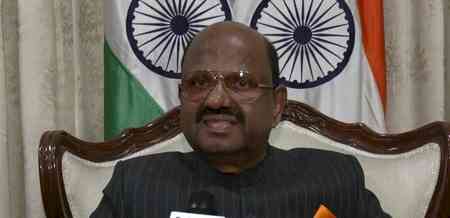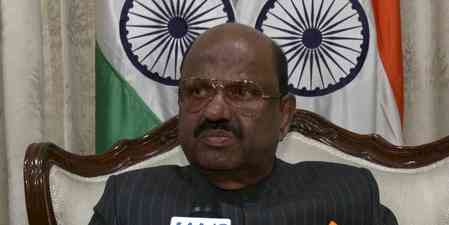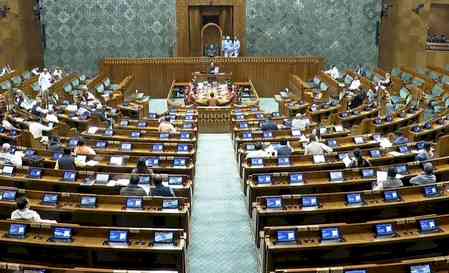World Leprosy Day: Concrete measures needed to defeat leprosy in Telangana
Leprosy, a chronic infectious disease caused by bacterium Mycobacterium leprae, has all but disappeared from most parts of the world

Hyderabad, January 30, 2022: Leprosy, a chronic infectious disease caused by bacterium Mycobacterium leprae, has all but disappeared from most parts of the world. In 2005, India declared that it had eliminated leprosy as a public health problem. In 2005, India declared that it had eliminated leprosy as a public health problem. Unfortunately, newer cases continue to be diagnosed in different parts of the country and today, India accounts for over half (almost 60%) of the world’s new leprosy patients. According to National Leprosy Eradication Programme (NLEP) report for 2020-2021, around 1,20,000 new cases of leprosy were detected. This situation for a renewed fight against the disease to attain the goal of Zero Leprosy by 2030.
In leprosy, the bacteria are transmitted through little droplets from the noses and mouths of infected persons. 98% of the infected people have natural immunity towards it and don’t show any signs of leprosy. If left untreated, it affects the nerves and muscles in the hands and feet of the patient, eventually leading to the extreme deformities and permanent disability that have become stigmatizing symbols associated with leprosy.
Lack of awareness about the disease and the stigma associated with the condition makes it worse. As, Dr P Narasimha Rao from the Indian Association for Leprosy, Hyderabad, points out, “As per the NLEP Annual Report for 2020-2021, there were 1649 new leprosy cases detected in Telangana with a total of 2340 cases on the record in the state. Telangana is one of the highly endemic states for the ailment. Leprosy is a potentially disabling condition. When diagnosed early and effectively managed, it will prevent disability as well as stigma associated with it. This stigma of leprosy is diminishing with time but continued transmission and lack of awareness and understanding about the disease in the community makes the detection and treatment challenging. The delay in detection often adds to the disability burden of leprosy.”
The COVID-19 pandemic has further added to the situation. Guidelines with respect to isolation, social distancing and initial restrictions on movement created challenges for patients to accessing healthcare services and the limited active surveillance led to lesser number of cases being detected. The reallocation of healthcare practitioners to address the pandemic along with the fear of contacting the virus contributed to the decreased case notifications.
It is important to understand that if leprosy is detected on time, majority of the cases can be cured between 6 to 12 months. The multi-drug-therapy (MDT), donated to World Health Organization (WHO) by Novartis and provided free of cost by the government has successfully treated 16 million leprosy patients since its introduction. As per the NLEP report for 2020-2021, 98.48% cases were released from treatment as cured.
“The availability of treatment which can cure leprosy effectively means that what we are voluntary reporting. To this end, there needs to be a robust awareness campaign to deal with stigma and discrimination associated with the disease and encourage those who are infected to come forward for treatment. In addition, there needs to be state-wide screening programs to identify white patches early and treat appropriately. Early detection and treatment are the cornerstones for leprosy control”, said Dr. S Ananth Reddy Chief Administrator & Chief Medical Officer, Sivananda Rehabilitation Home.
Elaborating on the need for strategic partnerships in addressing leprosy, Vaishali Iyer, Country Head - Communications, Engagement & CSR, Novartis in India said, “At Novartis, we have been involved in the fight against leprosy for over 30 years. Since 2000, we have been donating the global supply of leprosy drugs completely free of charge through the WHO leading to reducing the global disease burden by 95%. In 2020, we renewed our pledge and extended our MoU with the WHO through 2025. We believe that collaborations like these will be crucial in our fight against leprosy and we look forward to collaborating with the government and other key stakeholders to achieve the shared goal of Zero Leprosy by 2030.”
In addition to prescription of MDT to patients, approaches such as prophylaxis are being considered to break the chain of transmission and achieve zero leprosy.
Experts highlight that we need a strong integrated strategy and implementation plan to achieve elimination of leprosy. This would include capacity building of healthcare workers and other personnel to provide quality services, stakeholder commitment towards building awareness, effective surveillance, adoption of digital tools for diagnosis and screening and lastly, support through public private partnerships.


 cityairnews
cityairnews 








